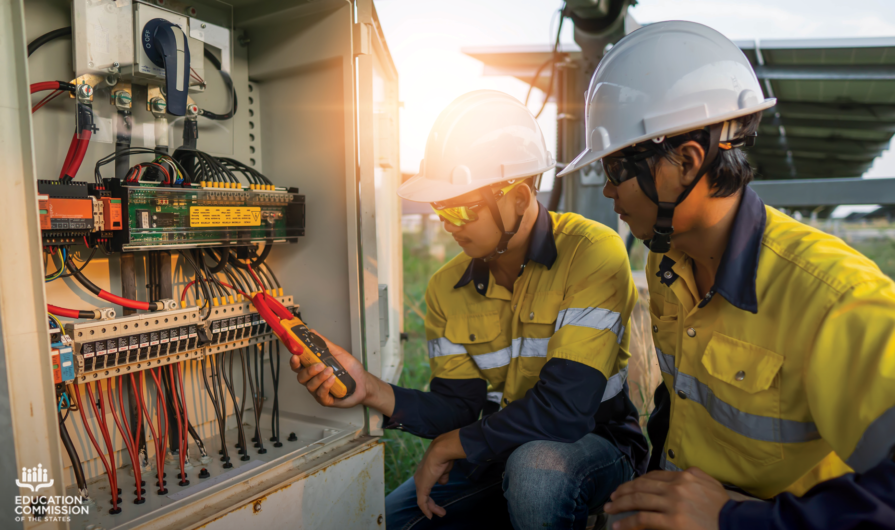Word on the street is apprenticeships create a direct pathway to in-demand jobs by providing an on-ramp for individuals to enter the workforce while learning the skills needed to enter specific jobs and careers. As part of broad workforce development initiatives, states are relying on registered apprenticeships as one way to meet workforce demand. In their workforce development planning within the context of the Workforce Innovation and Opportunity Act, states have identified apprenticeships as one of many opportunities for people to gain on-the-job experience while earning a wage.
As employers look for skilled individuals to fill high-demand jobs, registered apprenticeships provide opportunities for people to engage in dedicated on-the-job training in conjunction with related classroom instruction that is directly linked to a career path. The benefit of related instruction in tandem to on-job training is clear; however, the connection between postsecondary education and apprenticeships is less clear.
Apprenticeship programs frequently make connections with postsecondary institutions at regional and local levels. Often, employers establish apprenticeship agreements that require instruction or support from postsecondary institutions. These partnerships prove advantageous as workforce needs tend to require unique skill sets based on the industry and region of the state. While not a blanket requirement, this is a common way regions and localities connect apprenticeships with postsecondary education.
At the state level, however, only nine states and the District of Columbia require a direct instructional requirement between postsecondary education and registered apprenticeships, according to our new 50-State Comparison.
Here are some ways states are making direct connection between apprenticeships and postsecondary education:
- Hawaii, North Carolina, Ohio and the District of Columbia require in statute an instructional connection between postsecondary education and apprenticeships by charging institutions with apprenticeship instruction or coordinating the programs.
- Six states solidify the partnership through statewide requirements. These apprenticeship opportunities include Earn and Learn (Georgia), Ivy Tech's Apprenticeship Program (Indiana), Mississippi Apprenticeship Program, Montana Registered Apprenticeship, ApprenticeshipNH (New Hampshire) and Apprenticeship Carolina (South Carolina). Each requires varying levels of engagement from postsecondary institutions but requires them to be involved in the off-site, related instruction of apprentices.
As states continue to look for ways to support and develop their state’s workforce, opportunities for postsecondary institutions and workforce systems to engage in the development and implementation of training will continue to emerge. There is no single approach for postsecondary engagement in a state’s workforce development system, which illustrates the spectrum of opportunities for partnerships in training the workforce of the future.
















